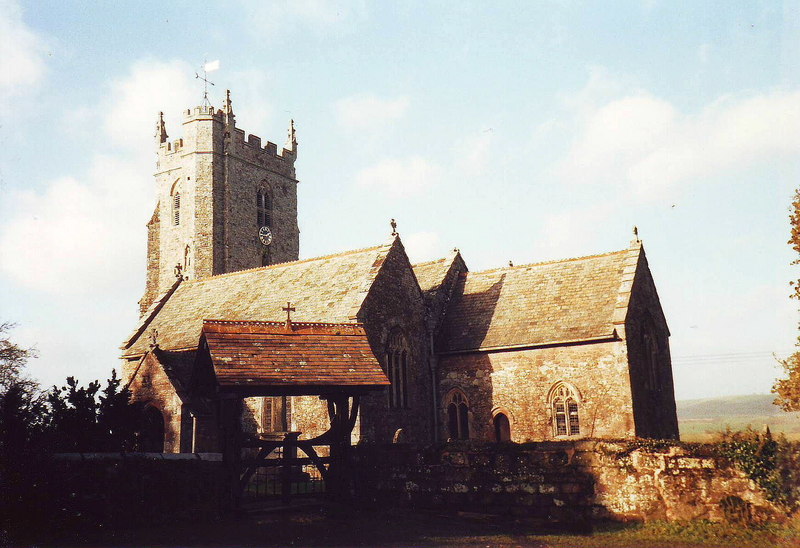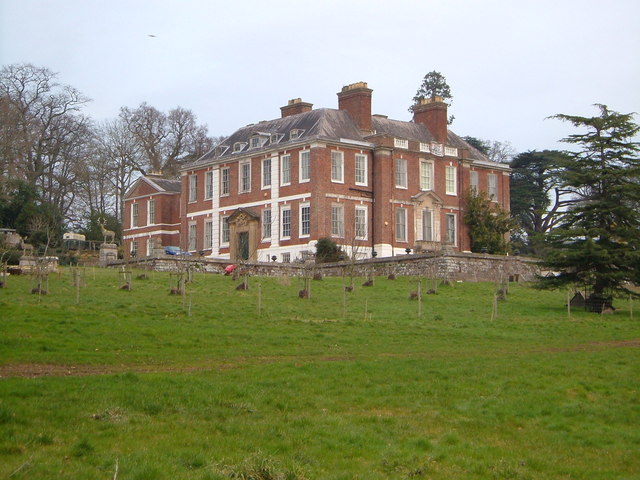Upton Pyne on:
[Wikipedia]
[Google]
[Amazon]
 Upton Pyne is a
Upton Pyne is a
 The manor came into the possession of the Pyne family during the reign of Henry I (1100–1135) when Herbert de Pins (or de pyn) took over the land.
The Pyne family held it for ten successive generations, until Constance Pyne married William Larder about the end of the 15th century. The Larders held the manor for five generations.
In the early 18th century the heiress of Stafford of Pynes married her neighbour Sir Henry Northcote (5th baronet) and took the manor to him. Sir Henry probably built the present
The manor came into the possession of the Pyne family during the reign of Henry I (1100–1135) when Herbert de Pins (or de pyn) took over the land.
The Pyne family held it for ten successive generations, until Constance Pyne married William Larder about the end of the 15th century. The Larders held the manor for five generations.
In the early 18th century the heiress of Stafford of Pynes married her neighbour Sir Henry Northcote (5th baronet) and took the manor to him. Sir Henry probably built the present
(Google Maps)
 Upton Pyne is a
Upton Pyne is a parish
A parish is a territorial entity in many Christian denominations, constituting a division within a diocese. A parish is under the pastoral care and clerical jurisdiction of a priest, often termed a parish priest, who might be assisted by one or ...
and village in Devon
Devon ( , historically known as Devonshire , ) is a ceremonial and non-metropolitan county in South West England. The most populous settlement in Devon is the city of Plymouth, followed by Devon's county town, the city of Exeter. Devo ...
, England. The parish lies just north west of Exeter
Exeter () is a city in Devon, South West England. It is situated on the River Exe, approximately northeast of Plymouth and southwest of Bristol.
In Roman Britain, Exeter was established as the base of Legio II Augusta under the personal comm ...
, mainly between the River Exe
The River Exe ( ) in England rises at Exe Head, near the village of Simonsbath, on Exmoor in Somerset, from the Bristol Channel coast, but flows more or less directly due south, so that most of its length lies in Devon. It flows for 60 mile ...
and River Creedy
The River Creedy is a small river in Devon, England. It gives its name to the local town or ''ton'' of Crediton, which is on its west bank, and to several local historic estates, namely ''Creedy Hilion'', ''Creedy Peitevin'' (later called ''Creed ...
. The village is located north of Cowley and west of Brampford Speke and Stoke Canon
Stoke Canon is a small village and civil parish near the confluence of the rivers Exe and Culm on the main A396 between Exeter and Tiverton in the English county of Devon, and the district of East Devon. At the 2001 census it had a populatio ...
. It has a population of 539.
History
 The manor came into the possession of the Pyne family during the reign of Henry I (1100–1135) when Herbert de Pins (or de pyn) took over the land.
The Pyne family held it for ten successive generations, until Constance Pyne married William Larder about the end of the 15th century. The Larders held the manor for five generations.
In the early 18th century the heiress of Stafford of Pynes married her neighbour Sir Henry Northcote (5th baronet) and took the manor to him. Sir Henry probably built the present
The manor came into the possession of the Pyne family during the reign of Henry I (1100–1135) when Herbert de Pins (or de pyn) took over the land.
The Pyne family held it for ten successive generations, until Constance Pyne married William Larder about the end of the 15th century. The Larders held the manor for five generations.
In the early 18th century the heiress of Stafford of Pynes married her neighbour Sir Henry Northcote (5th baronet) and took the manor to him. Sir Henry probably built the present Pynes House
Pynes House is a Grade II* listed Queen Anne style country house built by Hugh Stafford between around 1700 and 1725, situated in the parish of Upton Pyne, Devon, 3 miles northwest of Exeter. It was the manor house for the Manor of Upton Pyne, ...
, a typical Queen Anne house, enlarged in 1851.
The Pyne family also gave their name to the villages of Culm Pyne and Washford Pyne. One branch of the family moved to Ireland
Ireland ( ; ga, Éire ; Ulster-Scots: ) is an island in the North Atlantic Ocean, in north-western Europe. It is separated from Great Britain to its east by the North Channel, the Irish Sea, and St George's Channel. Ireland is the s ...
in the time of Elizabeth I
Elizabeth I (7 September 153324 March 1603) was Queen of England and Ireland from 17 November 1558 until her death in 1603. Elizabeth was the last of the five House of Tudor monarchs and is sometimes referred to as the "Virgin Queen".
Eli ...
, and acquired substantial estates at Mogeely
Mogeely () is a village located in County Cork, Ireland. As of the 2016 census, it had a population of 389 people.
Mogeely lies in East Cork, approximately north of Castlemartyr off the N25 national primary road. Mogeely railway station was, ...
in County Cork
County Cork ( ga, Contae Chorcaí) is the largest and the southernmost county of Ireland, named after the city of Cork, the state's second-largest city. It is in the province of Munster and the Southern Region. Its largest market towns a ...
. Sir Richard Pyne
Richard is a male given name. It originates, via Old French, from Old Frankish and is a compound of the words descending from Proto-Germanic ''*rīk-'' 'ruler, leader, king' and ''*hardu-'' 'strong, brave, hardy', and it therefore means 'strong ...
(1644-1709), Lord Chief Justice of Ireland
The Court of King's Bench (or Court of Queen's Bench during the reign of a Queen) was one of the senior courts of common law in Ireland. It was a mirror of the Court of King's Bench in England. The Lord Chief Justice was the most senior judge ...
, was a member of this branch of the family. Pynes House is now used as an events venue, primarily for weddings.
The church
St Mary's church is built of the local volcanic stone, and has a particularly beautiful tower, with figures of the four evangelists at its corners and that of Christ in Benediction on its West face. The chancel has some early 14th century work; the West tower and South aisle were probably added about 1400, the North aisle in 1833. The altar-piece is a painting of the Last Supper by an unknown hand, brought from Italy by one of the Northcotes about 1710. There is an altar-tomb to Humphrey Larder (d. 1588), another with a recumbent effigy of Edmund Larder (d. 1521), and several monuments to the Northcotes of Pynes, later Earls of Iddesleigh. John Walker, author of ''The Sufferings of the Clergy'', was rector here 1720-47, and is buried on the N. side of the churchyard.No Man's Chapel
There is a stone on the Upton Pyne road recording that the ancient chapel of St John the Baptist was situated here until its removal to Crediton Cemetery in 1926. Largely paid for by Sir John Shelley, Lord of the Manor of East Raddon, but with much support in the provision of labour, fixtures and furnishings by local parishioners, "St John's Baptist's Chantry was brought back to its original uses" as the Rural Dean noted as the chapel was re-dedicated in October 1896. There are regular references to events at the chapel during the 1890s and 1900s, but it seems to have fallen out of use after that. The chapel was therefore available for relocation when Crediton Cemetery was established in the 1920s. The name 'No Man's Chapel' comes from the conversion of an earlier chapel on the same site into a dwelling house by farmer George Painter. This earlier chapel appears on rent lists for the Manor of East Raddon dating back to the 1740s. It is said that this chapel dated back to the 14th century, although there is no evidence for this.See also
* Upton Pyne appleReferences
Sources
(Google Maps)
External links
{{authority control Villages in Devon Former manors in Devon